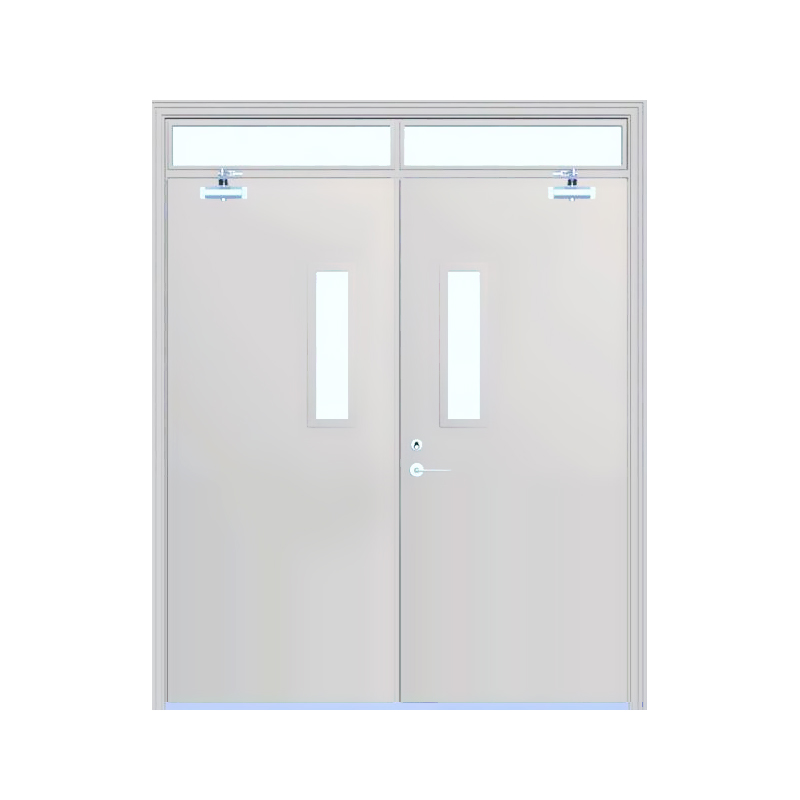

The choice of cleanroom door design depends on several […]
The choice of cleanroom door design depends on several factors specific to the cleanroom application, including cleanliness requirements, workflow efficiency, space constraints, and operational considerations. Here’s a breakdown of different cleanroom door designs and their suitability for various applications:
1. Swinging Doors
Design: These doors open by swinging either inward or outward on hinges.
Suitability:
Hygiene Control: Suitable for cleanrooms where maintaining positive or negative pressure is crucial to control particle flow.
Traffic Flow: Ideal for areas with high personnel and equipment traffic due to ease of accessibility.
Versatility: Can accommodate various widths and heights, making them versatile for different cleanroom sizes.
Considerations:
Require adequate space for opening and closing, which may affect cleanroom layout.
Hinge mechanisms and seals must be designed to minimize particle generation and maintain cleanroom integrity.
2. Sliding Doors
Design: These doors slide horizontally along a track to open and close.

Suitability:
Space Efficiency: Ideal for cleanrooms with limited space, as they do not require swing space.
Particle Control: Can be designed with tight seals to minimize air leakage and particle ingress.
Smooth Operation: Provides smooth and quiet operation, enhancing cleanroom workflow.
Considerations:
Track and sealing mechanisms need to be maintained to prevent particle accumulation.
May require more frequent cleaning and inspection compared to swinging doors to ensure functionality.
3. Rolling (High-Speed) Doors
Design: These doors roll up vertically or horizontally into a compact housing.
Suitability:
High-Traffic Areas: Suitable for cleanrooms with continuous and high-volume traffic of personnel and equipment.
Rapid Access: Designed for quick opening and closing, optimizing workflow efficiency.
Space-Saving: Roll-up design conserves space and can be integrated into confined cleanroom layouts.
Considerations:
Require regular maintenance of rolling mechanisms and seals to prevent contamination.
Select models with smooth surfaces and minimal crevices to facilitate cleaning and minimize particle generation.
4. Air Shower Doors
Design: Typically swinging or sliding doors designed for air shower entry systems.
Suitability:
Decontamination: Essential for air shower entry points to remove contaminants from personnel and equipment before entering the cleanroom.
Airflow Control: Designed to maintain cleanroom pressure differentials and minimize particle ingress.
Considerations:
Must integrate seamlessly with air shower systems to ensure effective decontamination.
Require robust sealing and high-quality construction to maintain cleanroom standards.
5. Strip Doors (Flexible Vinyl Curtains)
Design: Consist of overlapping strips of flexible vinyl that part when personnel or equipment passes through.
Suitability:
Temperature Control: Suitable for cleanrooms where temperature control is critical, as they minimize air exchange.
Visibility: Provides visibility through the door while maintaining separation between cleanroom zones.
Cost-Effective: Generally more cost-effective than solid doors and can be replaced individually if damaged.
Considerations:
May not provide as tight a seal as solid doors, potentially impacting cleanroom air quality.
Require periodic replacement of vinyl strips to maintain effectiveness.
Choosing the Right Design:
Cleanliness Requirements: Consider the cleanroom classification and cleanliness standards to ensure the door design supports particle control and cleanliness levels.
Workflow Efficiency: Assess traffic patterns, frequency of use, and space constraints to determine the most efficient door design.
Maintenance Requirements: Evaluate the ease of maintenance, including cleaning and inspection, to minimize disruption to cleanroom operations.
Integration: Ensure the door design integrates seamlessly with cleanroom HVAC systems, pressure differentials, and overall facility layout.
The best cleanroom door design will depend on balancing these factors to meet specific operational needs and regulatory requirements while optimizing cleanliness and workflow efficiency within the cleanroom environment.
Our new models offer superb design;competitive prices and their new features give them distinct advantages over similar products from other manufacturers.